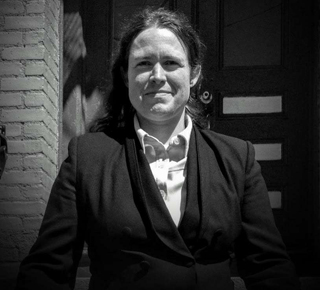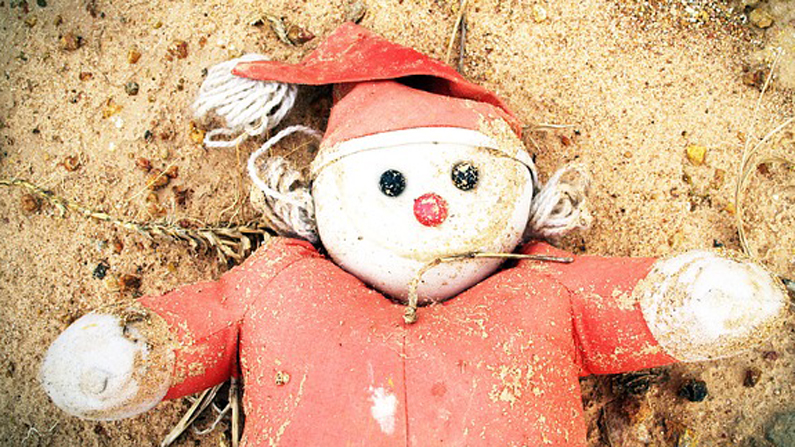New York City 2017 and a rash of babies killed. ACS (CPS in NYC) seemed unable to stop the killing. But, Maternal Home Visiting programs, programs that help mothers break the cycle of abuse that they grew up in, are still only available to 6% of mothers in need.
Maternal Home Visiting programs protect babies, protect them from being killed, protect them from being abused, and in the process protect taxpayers from the increased costs of education, criminal justice and healthcare.
So why aren’t we using them?
New Yorkers now ask “did you hear about that little kid who got killed after all those calls to ACS?” The response is “which one?”
Zymere Perkins. Jaden Jordan. Sherling Camacho.Michael Guzman. Zamair Coombs. Each of their deaths involved varying degrees of ACS culpability. Each elicited varying amounts of outrage. And in every case we could have prevented their deaths, and the suffering that preceded it.
All states have their own version of ACS/CPS. No state has found a magic bullet. Nationwide, over a hundred children who are known to CPS die from abuse each year (ASSOCIATED PRESS REVIEW), as do hundreds more who are unknown to the system (US Department of Health and Human Services). In fact, more children die directly from child abuse and neglect than from childhood cancer each year (American Cancer Society). Many of those deaths prompt campaigns to “fix” CPS. Yet every year the fatalities continue.
CPS, ACS in New York City, can at best keep abused kids alive, and “alive” is a very low place to set the bar.
Child Protective Services investigate reports that a child has been abused. If they find credible evidence that abuse or neglect has occurred, they have two choices: help the abusive or neglectful family do better, or place the victimized child with other caregivers. Unfortunately, the effects of abuse cannot be undone, and abuse is easier to prevent than to stop.
The 1997 Adverse Childhood Experiences (ACE) Study from the CDC proves that surviving a single act of abuse can cause physical, mental and financial problems throughout the victim’s life. Abused children are more likely to suffer from mental illness, chemical addiction, cancer, heart disease and diabetes. Stopping abuse or moving the child to a family where they aren’t abused, is essential, but doesn’t undo the damage.
Before the ACE study, we knew child abuse caused tears and nightmares, and there was some research linking it to childhood mental illness, criminal behavior and drug addiction. The ACE study reaffirmed that, but also linked it to cancer, heart disease, poverty, domestic violence (both as victim and perpetrator) and adult mental illness and addiction. It demonstrated that no single type of abuse is more or less severe than another, and it demonstrated that issues which fall outside our criminal justice/ child protective system (things like parental death, incarceration, or mental illness) can cause as much harm as direct abuse. The ACE study broadened our understanding of how adults can scar kids and how completely inadequate our current approach to child protection is.
Here’s a hypothetical, but common, example: heroin addicted parents subject a little girl to physical abuse, sexual abuse and physical neglect (she doesn’t consistently have food and supervision, and she has very little access to medical care). She now has an ACE score of four, and no interaction with CPS can undo that. She grows up, committed to breaking the cycle of abuse and dysfunction. She gets pregnant and stays with the baby’s father, even though he’s abusive. She struggles with depression and finds painkillers and alcohol are good ways to cope with the depression. And while she refuses to hit her children, she relies heavily on screaming, fear and humiliation to make her children obey her, which constitutes psychological abuse. So while trying to be a better mother than she had, she has bestowed upon her own children the same ACE score she has.
Clearly, ACEs cause bad things to happen in our society. ACEs cost our society as a whole. A very conservative figure from the CDC is $124 billion. Based on population, New York’s estimated share would be 7.69 billion dollars. The money we spend dealing with the consequences of ACEs is woven into our spending on Medicare, Medicaid, special education, anti-poverty programs and the criminal justice system.
The good news is that ACEs can be prevented, and scores of 4 or more, which carry with them the worst consequences, can be substantially eliminated using evidence based programs.
There are standardized assessments such as Kempe that are proven to do a good job at predicting which new families are most likely to abuse, maltreat or traumatize their children. And Maternal Home Visiting programs, where at risk pregnant or new mothers work intensively with professionals for at least two years, and then prevent the transmission of ACEs to the next generation.
Programmatically, the differences between maternal home visiting programs (which are known as “primary prevention”, since they prevent the onset of abuse) and myriad ACS/CPS responses to known or suspected abuse (which are disingenuously called “preventative services” because they are supposed to prevent foster care, are best referred to as secondary prevention because they are supposed to stop further maltreatment that has already started), it’s much easier for a new mother learn to parent properly before she becomes abusive or neglectful.
There is a small window of opportunity when mothers are most likely to bond with their baby and are most receptive to changing their life to help their baby. Bonding with a baby makes a mother less likely to abuse that baby.
Conversely, abuse, neglect and chaos affect a small child’s brain development and tend to make them harder to parent. Mothers facing significant stressors are less likely to bond with their child. Poor bonding, high stress levels and a child who becomes hard to parent is a dangerous combination not easily undone with things like parenting classes.
From a human decency point of view, primary prevention is saying “child maltreatment is wrong and we will prevent it”.
Despite their intensity, maternal home visiting programs do save money. Every dollar invested in them yields a 15% return in the first year of a child’s life; that sum compounds over time. The savings include reduced CPS/ACS involvement, reduced need for special-education services, fewer emergency room visits, and increased financial self sufficiency of the family.
Today in New York state, and across the nation, we are penny wise and dollar stupid. Only about 1 in 20 families who need these programs have access. Cleaning up the carnage of ACEs has budget lines and departments dedicated to them, but preventing these ACEs doesn’t.
Healthy Families NY, the state’s biggest maternal home visiting program, has been flat-funded for ten years, which when adjusted for inflation amounts to a decrease in services.
Meanwhile taxpayers spent almost $6.4 million on the deaths of Zymere, Jaden, Sherling, Michael and Zamair, and that cost will be met without question. Not to would be to say their deaths don’t matter. Children don’t decide which family they are born into.
Today’s message for New York’s high-risk children is “your childhood, your life, your future don’t matter.” With a focus on prevention rather than intervention they can.
Erie County has the highest rate of indicated child abuse in NY, and 17 child fatalities in the last 6 years. Senator Tim Kennedy, who represents the county, is committed to securing funding for these primary prevention programs, as is Senator Daniel Squadron from New York City [Daniel Squadron is no longer a member of the NY state senate]. Mayor de Blasio and our leaders in Albany should be too. We simply can’t afford not to.

Melanie Blow
Executive Director, Stop Abuse Campaign
A survivor of incest, psychological abuse and a host of other childhood trauma, Melanie now uses her talents to prevent Adverse Childhood Experiences. Melanie has over a decade of legislative advocacy regarding children’s issues, and she has been published in newspapers, magazines and blogs all across the country.
Melanie has an ACE score of 6.
